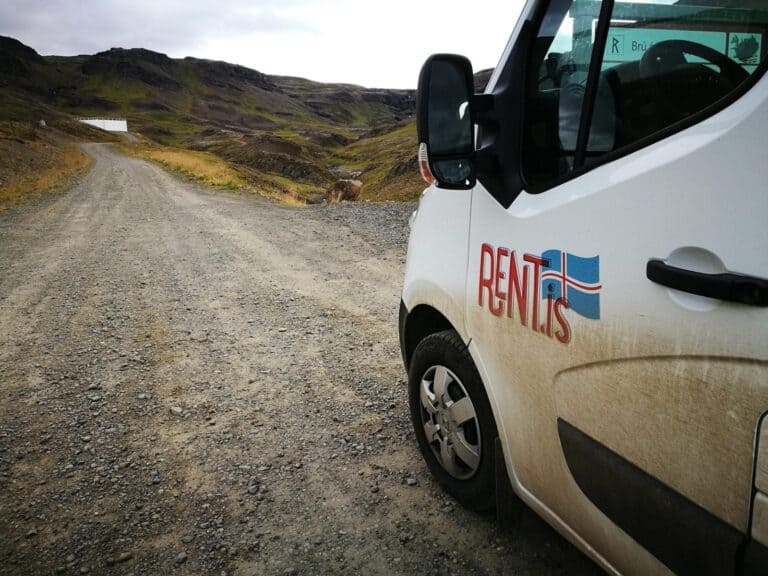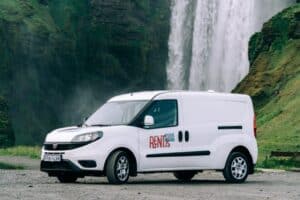Iceland is the Land of Fire and Ice. With massive geothermal systems under the island and 30 different volcanic systems, country has of unmatched outdoor wonders.
Before planning your trip to the country, you’re likely wondering: Is Iceland expensive?
The short answer is yes—Iceland is one of the most expensive countries in the world. However, there are many ways to cut costs in a budget for an Iceland trip without sacrificing comfort, quality, or adventure.
The cost for a trip to Iceland depends on your flexibility, how long you stay, and what you decide to do.
So, how much is a trip to Iceland? Let’s take a look at what you should factor in as you estimate your Iceland trip cost.
Is Iceland Expensive to Visit?
There’s no question that Iceland is a stunning destination. But as the fifth most expensive country in the world, is it worth the high price tag? Absolutely, but it’s important to understand why Iceland can be such an expensive destination.
One of the main factors contributing to Iceland’s high costs is its remote location. Sitting in the North Atlantic Ocean, Iceland heavily relies on imports, which can drive up the prices of goods and services. Furthermore, Iceland’s small population and limited infrastructure mean higher operating costs, adding to the overall expense.
Another factor is the surge in international tourism that Iceland has experienced in recent years. As more travelers flock to see its breathtaking landscapes and attractions, the demand for everything from accommodations to tours has increased.
However, with some careful planning and budgeting, you can significantly lower your Iceland trip cost. For instance, renting a campervan instead of paying for hotels ia one of many ways to make your Icelandic adventure more budget-friendly without sacrificing the experience.
Airfare Prices
But the first thing to keep in mind when planning your Iceland trip budget? Cost of airfare. Your airfare fees will depend entirely on where you’re coming from. For example, how much does it cost to fly to Iceland if you are already in Europe? If starting in countries like France, Germany, and Spain, you can expect to pay anywhere from $100 to $700 for a round-trip flights. Ultimately, the cost depends on the season and the country of origin.
On the other hand, our North American cousins can expect to pay anywhere from $700 to $1,000+ for a round-trip ticket.
Thankfully, you can occasionally find some fantastic deals on airfare, though!
Accommodation Costs
How expensive are accommodations in Iceland? Again, the answer depends on your choices. The type of lodging you choose, the location, and the time of year you visit all factor into your accommodation costs. Taking seasonality out of the equation, let’s take a look at the average accommodation prices.
We estimate average accommodation costs range from $55-$150 per night in shoulder season and $60-$300 per night in high season.
This assumes you’re staying in hostels or splitting a private room as a couple in a basic hotel or guesthouse.
For travelers who prefer hotels or more upmarket accommodation, expect to pay anywhere from $200-$600+ a night.
Luckily, you have a more affordable (and more fun) option. If you rent a camper van you can significantly cut your accommodation costs. A fully-equipped camper, which you can use to visit some of the country’s most beautiful and remote places can cost you as little as $80 per night! This option provides a place to sleep and allows you to explore Iceland at your own pace, without the constraints of hotel bookings or fixed itineraries.
But renting a camper van in Iceland is not just a cost-effective accommodation choice — it’s also an adventure in itself. With the flexibility to travel wherever the road takes you, you can wake up to breathtaking views, whether alongside a serene fjord, beneath towering mountains, or overlooking a rugged coastline.
Plus, many campervan rental companies offer 4×4 SUVs and campers equipped with essential amenities such as a bed, cooking facilities, and even heating systems so that you can have a comfortable experience no matter the weather.
Transportation Cost
Sadly, public transportation is lacking in Iceland. Most tourists choose to rent a car and drive around the island. Generally basic insurance and a standard car will cost $40-$50 per day per person. Plus, you’ll need to factor in fuel costs, which hovered around $2.50 per liter as of mid-2025.
Thankfully, this is another instance where you can reduce the cost of visiting Iceland by taking advantage of the best discounts during the shoulder season.
Car Rental vs. Guided Tour Costs
Guided tours are typically cheaper than renting a car. Bus tours are advertised everywhere in Reykjavik, and this competition drives prices down. Tours can be 20%-50% cheaper than daily travel costs with a car rental. However although you will save money, you will also sacrifice a level of freedom when using guided tours.
So, why not get the best of both worlds by renting a camper van instead?
Once again, many travelers on an Iceland budget trip choose to rent camper vans so they can cut out accommodation costs. Camper vans are not that much more expensive than cars, and there are plenty of places to pitch up for the night.
Food Expenses
A big part of your Iceland trip cost will come from food. It should not surprise you that food is expensive here. This is yet another area where imports drive up costs, and these costs are passed on to you.
The best piece of advice is to cook your own meals. Local Grocery stores provide significantly cheaper meals than restaurants. In fact, they’re up to 20% cheaper in Reykjavik than they are in the rest of the country.
Eating out may be desirable, but prepare to pay $25-30 per person per meal, even in a budget restaurant.
Ultimately, where and how you choose to eat will heavily impact your Iceland trip cost.

Day Tours/Activities
Thankfully, most of Iceland’s natural attractions are free of charge, though parking fees apply in many areas. Therefore, travelers on a budget Iceland trip don’t need to pay for extra activities to make the most of their Icelandic adventure.
The cost of day tours depends on the provider, where you are going, and what you want to do. Competition in this business is fierce.
On average, expect to pay anywhere from $20-$50 per day per trip.
How Much Does a Trip to Iceland Cost?
If you’re planning a trip to Iceland, the first thing you need to do is familiarize yourself with Icelandic currency. The official currency of Iceland is the Icelandic króna (ISK), which is used for most transactions in the country. However, credit and debit cards are widely accepted, especially in urban areas like Reykjavik and popular tourist destinations. That said, carrying some cash with you for smaller purchases or in more remote areas where card acceptance may be limited is still a good idea.
When exchanging currency, always be mindful of exchange rates and fees. Rates can vary depending on where you exchange your money, with airports and tourist areas often offering more expensive rates. To save money, it’s usually best to withdraw cash from ATMs or use credit cards for purchases since they typically offer more competitive exchange rates.
Now, let’s talk about the average cost of a trip to Iceland and how much money you’ll actually need to cover your vacation.
The following detailed budget breakdown is based on two people traveling on an Iceland budget, cooking their own meals, avoiding expensive hotels, and not taking any guided tours. Airfare costs are also not included.
- Accommodation – $88-$155 per night
- Transport (rental car)– $65-$120 per day.
- Transport (campervan rental) – $80-$300 per day.
- Groceries – $15-$35 per day.
- Activities – $0-$30 per day.
While a Iceland trip can be cheaper if you camp, hitchhike, or even couchsurf, most travelers should expect to spend at least $150 per day during shoulder season or up to $300 or more a day during peak season.
How Much is a Trip to Iceland for a Week?
A week in Iceland is long enough to explore this breathtaking country and enjoy all the sights. Of course, if you have more time and money to spare, two to three weeks in Iceland will allow you to drive the entire Ring Road, Iceland’s scenic main highway that loops around the entire island.
To give you an idea of the cost of a week-long trip for two people, here’s a breakdown of some of the expenses you can expect in your Iceland travel budget based on the costs mentioned above:
- Accommodation: $616–$1,085 for budget to mid-range stays
- Transport: $455–$840 for a rental car; $560–$2,100 for a campervan
- Groceries: $70–$245 if you cook your own meals
- Activities: $0–$210 depending on the mix of free sights and paid tours
- Travel insurance: Around 5%–10% of your total trip cost
That puts a one-week trip at roughly $1,050–$2,100 for two people, excluding flights, with peak-season prices trending even higher. Choosing a campervan can help offset both food costs and the need for a tour guide, since you can cook your own meals on the road and explore Iceland’s top sights at your own pace without paying for guided excursions. So, depending on your choices, a campervan could save you up to $1,365 over a week compared with paying separately for a rental car and accommodation.
Tips for Traveling to Iceland on a Budget
Here are some additional tips to keep your Iceland trip cost down:
- Travel during the shoulder seasons for lower prices and fewer tourists.
- Skip the expensive tourist attractions such as the Blue Lagoon, which can cost upwards of $450 for a few hours’ visit.
- Look for flight deals in advance. Being flexible on dates can also help you find cheaper flight prices.
- Travel through Iceland in a camper van instead of paying for accommodation.
- Cook your own meals.
- Choose group tours instead of private guides.
- Stay in hostels or guesthouses instead of splurging on hotel rooms.
- Purchase the Reykjavik City Card. This pass grants free entry to many museums and attractions and unlimited use of public transport.
- Take advantage of free walking tours.
- Bring your own reusable water bottle to save money on bottled water.
- Stock up on snacks like granola bars, nuts, and fruit before hitting the road.
- Accommodations in Reykjavik tend to be more expensive than those in smaller towns and rural areas. Consider staying outside of the capital city to save on lodging costs.
- Many cafes, restaurants, and accommodations offer free Wi-Fi to customers. Take advantage of these hotspots to stay connected without racking up data charges on your mobile phone plan.
- Alcohol can be expensive in Iceland, especially when dining out. Consider limiting your alcohol consumption or purchasing drinks from duty-free shops at the airport upon arrival to save even more money.
Explore Iceland with Rent.is
We understand how difficult it can be to keep your budget for a trip to Iceland down. But doesn’t mean you can’t find ways to travel the Land of Fire and Ice on a budget.
Our top recommendation is to consider renting an Iceland camper van for your journey. You’ll get to explore at your own pace and sample the sights you’ve dreamed of, all while saving big money on food and accommodation.
Here at Rent.is, we’re committed to making your Icelandic adventure as enjoyable and affordable as possible. We take pride in offering a range of campervan options that cater to all budgets, preferences, and group sizes. Our campervans come equipped with all the necessary amenities to ensure a comfortable and memorable journey, including sleeping facilities, cooking amenities, heating, and camping essentials.
Whether you’re chasing waterfalls, soaking up the hot springs, or hiking up a glacier, we’re here to help you make the most of your Iceland road trip, no matter your travel style.
Contact us to find out more about camper vans for your Iceland adventure.


